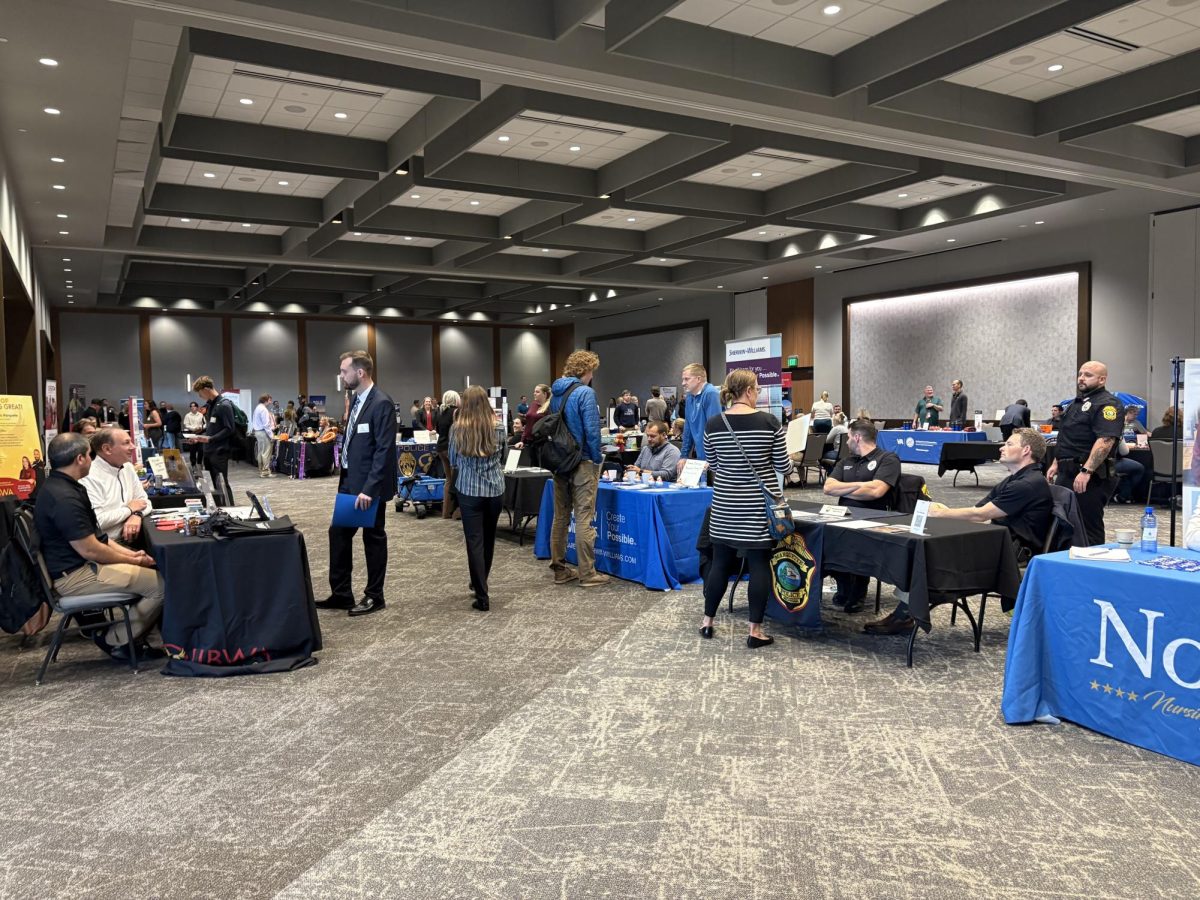NMU anticipates saving at least $35,000 in electrical energy costs thanks to new LED lighting fixtures placed in the DeVos Art Museum and the Superior Dome.
As a result of the power rate hike put in place by the Marquette Board of Light and Power (BLP) on Oct. 1, NMU operations personnel proactively sought a solution to reduce annual energy costs on campus. They arrived at the decision to install LED lighting in two buildings after $15,000 in energy optimization rebates were obtained from BLP.
Esko Alasimi, associate director of plant operations, supervised the project saying, “We did a light calculations study and that was the best determined area to get as much coverage as we possibly could with what was available.”
The cash rebates were given to the university as part of an energy credit incentive program, where indications of energy savings projects are reported to BLP and then are partially funded by whatever coverage is left over from paid utility costs.
Rebates are used by utility companies as incentives for professional buildings to use energy efficient equipment and help lower demands for power.
“Depending on what you put in, determines what you get back out and how much money you receive,” Alasimi said. “It’s just a precalculated formula.”
When identifying the cost savings amount that converting to LED lighting would offer, Alasimi said he went through the process by, “Basically taking what was being used—100,000 watts during a certain period of time [in the Superior Dome], took those 100,000 watts of usage and compared it to the 3,600 watts of usage that the new LED’s put in. So take that time and factor in all the costs associated with it, and that’s where the money came in from savings.”
In the Superior Dome, there are 100 lamps above the football field that give off 100,000 watts of electricity at full luminosity. Twelve new supplemental LED fixtures were also recently added on the catwalk above the field, bringing the total wattage output down to 3,600 during times when there isn’t a football game.
The LED system is activated for public walking, recreation and other general use. There has been no change to the enhanced lighting level required for Wildcat football games, according to an NMU Campus Connect newsletter. The Superior Dome project cost $18,000 and is expected to result in a savings of 96,400 watts of electricity.
“The intent was just to satisfy a legal and safety requirement for just general purpose using of the field—walkers. It was nothing to do with usage as programming for sports,” Alasimi said.
Alasimi said in a press release that NMU has already recouped the expense of the LED fixtures in the Dome from BLP rebates as well as energy savings.
In the DeVos Art Museum, 250 incandescent 75-watt lamps were replaced with 14-watt LED lamps. Alasimi said he expects NMU to pay off the $4,200 project in less than six months with rebate and annual savings. He is also looking to add LED lighting to the PEIF and other campus buildings in the future when funds allow.
“The rebates as funding is starting to dry out. They only have so much [of a] pool of money,” Alasimi said. “So as more and more companies, or individuals, or whatever is always utilizing that pool, it just shrinks down. As of 2017, there’s going to be more money available. Whether or not we can get into that would be depending on how many other people are applying for it.”























